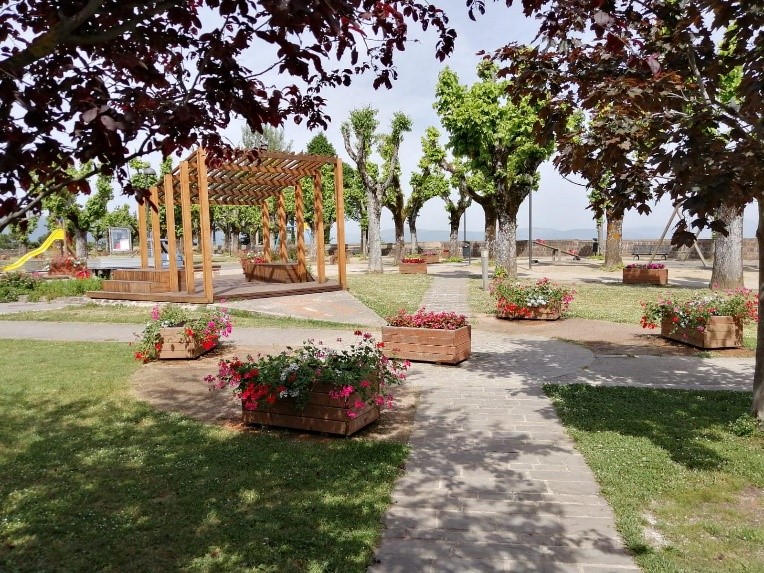The Caput Castri, nucleus of the first residential settlement on the hill on which San Ginesio stands, perpetuates the toponym in via Capocastello, the main street of the Ascarana district, which closes the walls to the west with the castle gate of the same name. Contrada and Porta are both dedicated to the memory of the castle of the sons of the noble Ascaro, occurred at the turn of the twelfth century, when the castle was being transformed into a municipality.
According to tradition, this was the district where the major nobles owned a house, including the Varano and their supporters, whose stately building rose to the major audience, next to the main church.
The Genesiae Historiae by Severini narrate (XVI century), supported by the parchment still present in the Municipal Historical Archive of San Ginesio (ASCSG, 19/25, 1345 July 27) than in 1345, as a result of services rendered and in recognition of his loyalty, San Ginesio gets a Bull issued in Avignon from
Pope Clement II who decrees his freedom from the yoke that the Lords of Camerino tried to arbitrarily impose on the Earth that, in December 1305 he had celebrated with great fanfare the fortification of Berardo da Varano di Camerino (ASCSG, 10/47, 1305 October 24) . Berardo's successors though, over time,
they had become so arrogant as to induce many of their noble adversaries to emigrate elsewhere.
It so happens that in August of that same year, 1345, some nobles of Caput Castri, owners of the houses probably immersed in the shadow of the large elms of which numerous documents of the time tell us, they try to bring in armed soldiers in support of the Signoria, taking advantage of the darkness of the night and of the
contiguity of their houses with the external walls. However, they are discovered and one of them, I confess, ends up beheaded in the main square by popular acclaim, while the beautiful residences of the conspiratorial nobles of Caput Castri are demolished and the earth that covers them, sprinkled with salt.
The municipality states that no one can build on it anymore. And so that this ordinance could no longer be contravened due to lack of information, stipulates that the story of the betrayal be told by an auctioneer every year, on 25 August, on the occasion of the patron saint's day, together with announcements concerning the San Ginesio fair.
This decision of the Magistrate allowed us to enjoy the shade of the lime trees of Colle Ascarano even today, the beautiful panoramic garden built on the embankment that supports the turn of the north wall in its curvature towards the west, from where the gaze can sweep along, from the changing profile of the Sibillini Mountains to Monte Conero rising from the Adriatic Sea.


